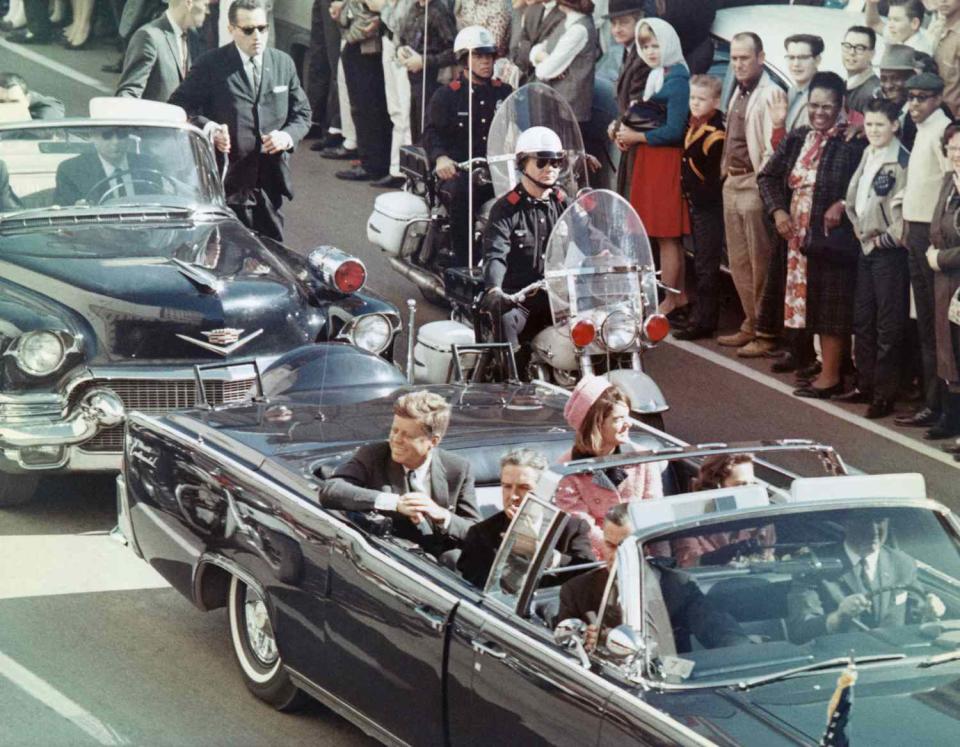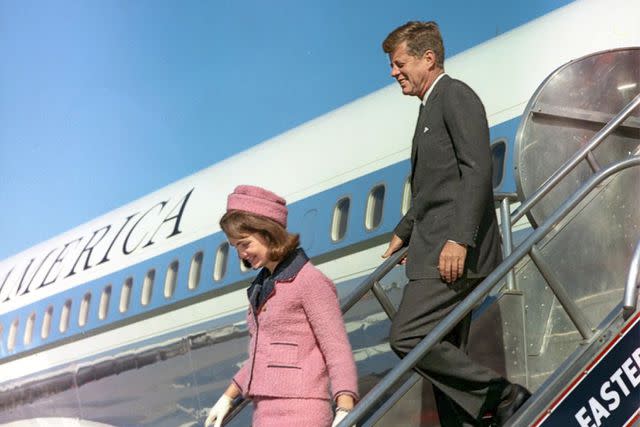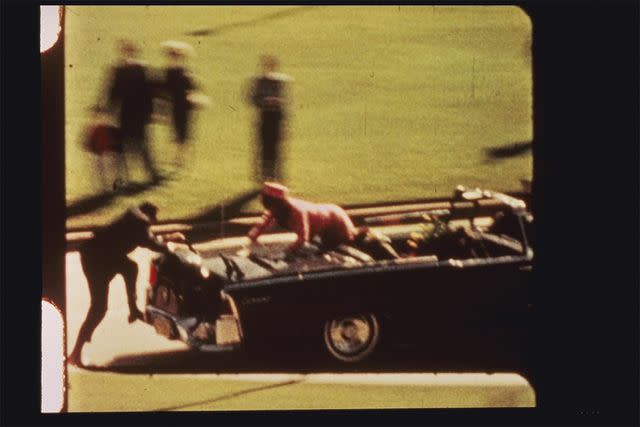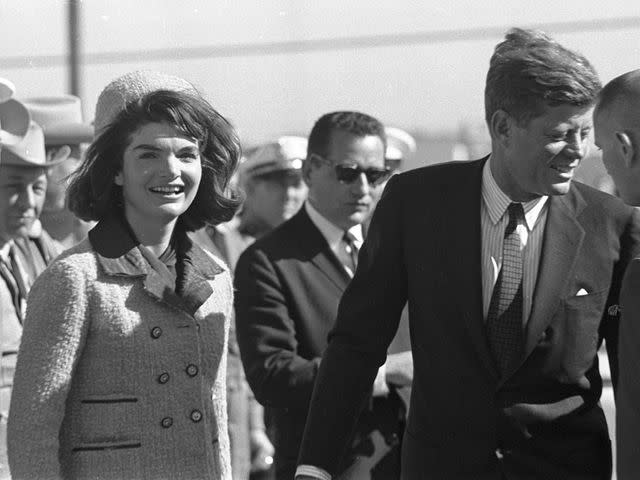Kennedy Secret Service Agent Counters JFK Assassination Conspiracies: 'One Man, One Gun, Three Shots' (Exclusive)
- Oops!Something went wrong.Please try again later.
- Oops!Something went wrong.Please try again later.
- Oops!Something went wrong.Please try again later.
Clint Hill, 91, tells PEOPLE that conspiracy theories surrounding President Kennedy's death stripped away Americans' trust in authority — a side effect that persists in modern-day politics 60 years later

Sixty years after the assassination of President John F. Kennedy, former Secret Service Agent Clint Hill remains steadfast in his belief of what happened that day: “One man, one gun, three shots.”
On Nov. 22, 1963, Hill jumped on the back of the presidential limousine in an attempt to save the president — a scene forever cemented in history by the horrific Zapruder film that documented the assassination.
To mark the milestone anniversary of Kennedy's death, Hill is releasing a new commemorative edition of his best selling book Five Days in November — co-written with his wife, Lisa McCubbin Hill — including a very personal afterword addressing the ongoing conspiracy theories and misinformation surrounding what happened in Dallas six decades ago.
“Right now, there are very few people left who were present that day and we’ll all be gone soon and there will be no one left to tell the facts,” Hill, 91, tells PEOPLE. “I thought it was important to get this out there — the factual documentation of what happened on Nov. 22, 1963.”
Related: JFK and Jackie's Final Hours Before Assassination: 5 Harrowing Details in Emotional New Docuseries

White House Photographs/John F. Kennedy Presidential Library and Museum, Boston
Jackie and Jack Kennedy descend the steps of Air Force One after arriving in Dallas on Nov. 22, 1963Few had a closer look at the tragic events than Hill, who was assigned to first lady Jackie Kennedy's detail in 1960. Accompanying the Kennedys to Dallas, he was in the motorcade — in the car behind the president’s — as they made their way to the trade mart where the president was scheduled to give a speech.
“All of a sudden, I heard an explosive noise from over my right shoulder,” he recalls. “I began to turn but my eyes remained fixed on the president. He grabbed his throat and fell to his left. I jumped off and ran to try and get to him, to Mrs. Kennedy, to form a barrier to protect them.”
By the time he did, the third shot had hit the president’s head.
Related: JFK Assassination 60 Years Later: Surviving Witnesses Speak Out in New Docuseries
“I started to get on the back of the car about the same time that the car accelerated, I got one foot up and then I slipped off and had to take three more steps to get to a position where I could get up again, and I did,” recalls Hill. “I pulled myself forward and threw myself on to the vehicle, just as Mrs. Kennedy is coming up on the trunk. Luckily I made it.”
If not, he would have been quickly run over by the follow up car, as the motorcade raced to Parkland Hospital in a desperate attempt to save the president’s life.

Hill agrees with the Warren Commission’s conclusion that Lee Harvey Oswald was the lone shooter.
As for the many conspiracy theories that continue today — that there was more than one shooter, that the CIA may have been involved, that a bullet found on a hospital gurney has hidden significance, to name a few — he calls them just that: “Theories, not facts.”
As he writes, “Everyone had his or her own opinion, which was often based on political leanings or hearsay.”
Adds McCubbin-Hill, “The many conspiracy theories grasp at different pieces of evidence, often leaving out relevant information and first hand accounts of Clint and others who were there.”

As Hill sees it, the president’s death marked “the end of the age of innocence. People lost their respect for authority, they no longer believed they were being told the truth by politicians or the news media.”
Never miss a story — sign up for PEOPLE's free daily newsletter to stay up-to-date on the best of what PEOPLE has to offer.
All these years later, he admits, “There's never been any closure. I’m reminded of it every day, whether it’s a photograph or a magazine or newspaper.”
“I should have done more," he adds. "I should have gotten there quickly, but I know I’m not faster than a speeding bullet. But that causes me guilt that is difficult to live with.”
For more People news, make sure to sign up for our newsletter!
Read the original article on People.

